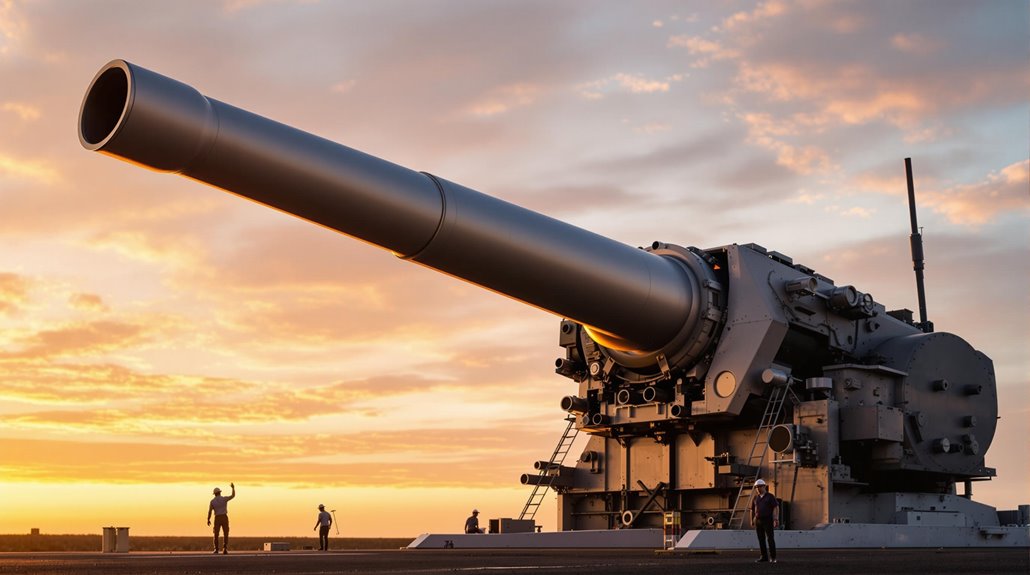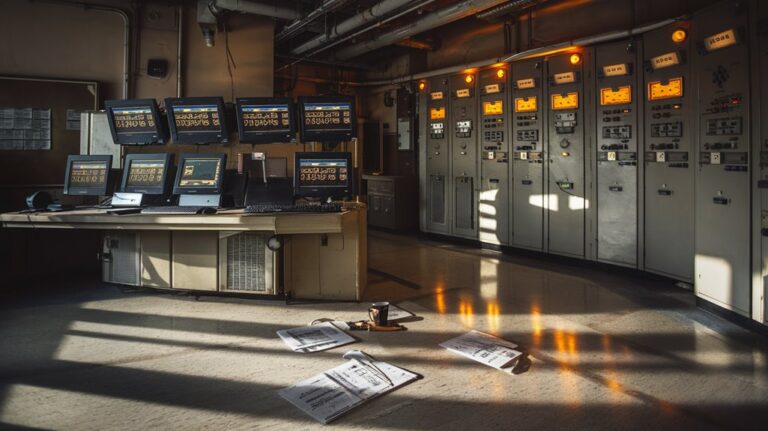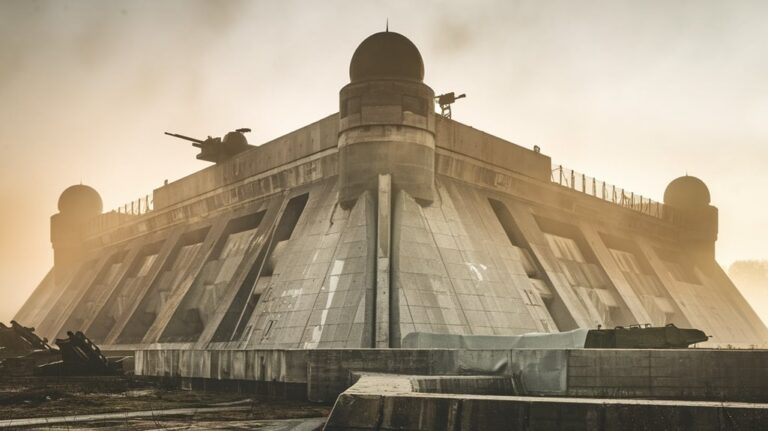Launching Satellites With a Giant Gun: Canada’S Crazy Plan
You've probably launched a toy rocket or fired a cap gun, but you've likely never considered combining artillery with space exploration. In the 1960s, that's exactly what Canadian ballistics expert Gerald Bull proposed: using a massive gun to shoot satellites into orbit. His Project HARP wasn't just another wild Cold War scheme—it successfully launched projectiles to the edge of space and nearly revolutionized how we access the cosmos. What followed was a tale of innovation, controversy, and untapped potential.
The Visionary Behind Project HARP: Gerald Bull
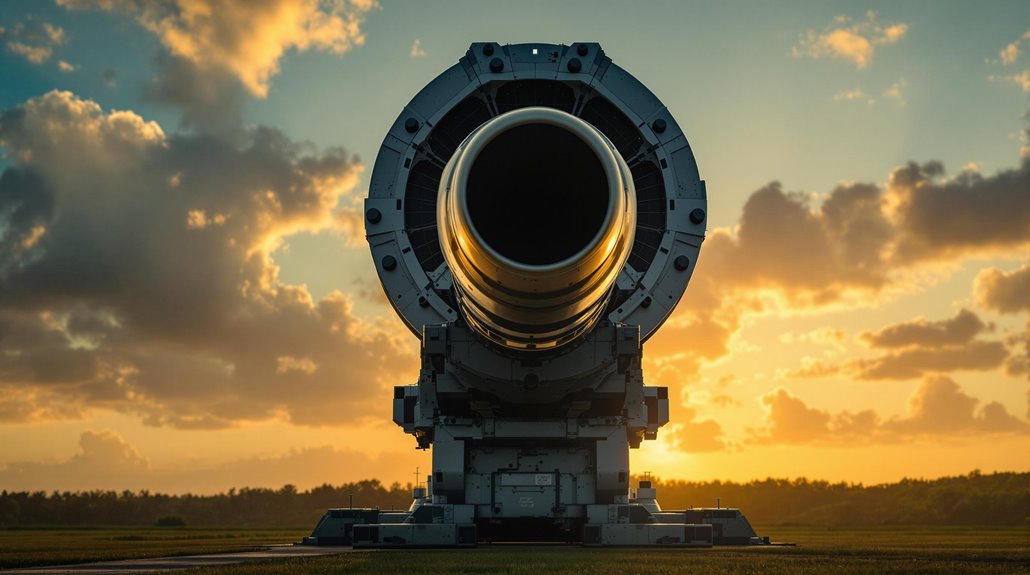
While many scientists dreamed of reaching space using rockets, Gerald Bull envisioned a radically different approach: launching satellites with a massive gun. His visionary insights emerged during his work at CARDE in the 1950s, where he specialized in high-velocity guns and propulsion systems.
You might be surprised to learn that Bull's innovative engineering career took off early – he became McGill University's youngest professor at age 34. His frustration with bureaucracy at CARDE led him to resign in 1961, but not before developing the groundwork for Project HARP.
He convinced McGill University and the U.S. Army to support his unconventional idea, securing funding and equipment including massive 16-inch naval gun barrels. Under his leadership, Project HARP launched over 100 test missiles by 1965. Bull's determination to prove that superguns could offer a cost-effective alternative to rockets would define his career. He famously dismissed conventional rocket science as cocktail science, showcasing his disdain for traditional space launch methods.
Building the World's Biggest Space Gun
Bull's ambitious vision demanded equally ambitious hardware – the construction of what would become the world's largest space gun. The engineering challenges were immense: he needed to repurpose massive 16-inch naval gun barrels and mount them vertically on a coral plateau in Barbados.
The gun was transported to the site by USA Navy landing craft and carefully positioned on the beach. The team joined two 140-ton MK II tubes with a custom sleeve, creating a 118-foot barrel held stable by four tension bars.
The launch physics required pushing the limits of conventional artillery. The gun could fire 1,322-pound projectiles at speeds up to 7,100 feet per second using powder charges nearly double the normal service load. After legal troubles with arms dealing, Bull would later take his expertise to work on Project Babylon in Iraq.
This extraordinary firepower helped set a world record, launching payloads to altitudes of 180 kilometers. The project's success led to even bigger plans with the proposed Big Babylon – a massive 512-foot gun capable of orbital launches.
The Martlet Projectiles: Engineering for Space
The Martlet projectiles represented a remarkable series of experimental vehicles that evolved from simple test rounds into sophisticated space-bound missiles.
Starting with the 450-pound Martlet 1, engineers progressively refined their designs to create increasingly capable research vehicles. These projectiles endured forces of 25,000 G during launch from the massive gun barrel. The most advanced model, Martlet 4, was designed to carry a 90 kg payload into low Earth orbit.
The Martlet 2 series proved particularly successful, achieving a world altitude record of 180 km and delivering extensive atmospheric data at a fraction of conventional rocket costs.
These projectiles featured diverse payload capabilities, carrying everything from chemical tracers to scientific instruments.
While later Martlet 3 and 4 versions faced significant technical hurdles, including propellant deformation and guidance system challenges, the program's achievements were impressive.
The Rise and Fall of HARP's Funding
In 1961, HARP's ambitious space program launched with modest seed funding, securing a $200,000 loan from McGill University and essential support from the U.S. Army, which provided gun barrels and a $750,000 radar system.
The funding dynamics quickly evolved as both American and Canadian governments increased their commitments, reaching a combined $3 million annually by 1964.
However, financial challenges soon emerged. You'll find that Canada's bureaucratic delays in releasing promised funds created significant obstacles.
When funds for 1964-1965 didn't arrive until May 1965, McGill University had to cover the gaps.
The Martlet 2 launches proved incredibly cost-effective, with each mission costing between $2,500 to $3,000.
The situation worsened as the Vietnam War strained U.S. resources, and NASA's focus on traditional rockets diminished HARP's appeal.
From Space Dreams to Desert Relic: HARP's Legacy
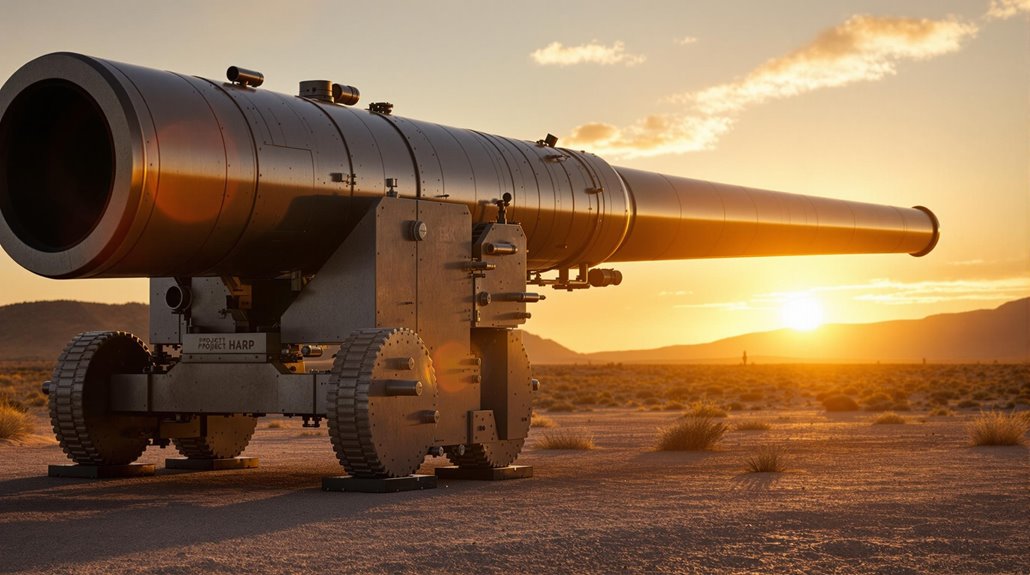
Despite falling short of its ultimate goal to launch satellites, HARP's technical achievements left an enduring mark on space exploration. You can still see HARP's impact on modern satellite technology and space launch concepts today.
Picture the project's remarkable accomplishments:
- A massive 120-foot gun that launched projectiles to a record-breaking 180 km altitude
- Groundbreaking data collection that provided over half of our upper-atmosphere knowledge
- Revolutionary gun-launched rocket technology that influenced scramjet development
- The iconic Barbados gun installation that stands as a symbol of human ingenuity
The gun's incredible power caused windows to shake across nearly the entire island of Barbados during test firings. Led by scientist John Hunter, the SHARP program achieved velocities of 3 kilometers per second with its test projectiles. These innovations didn't die with the project. Instead, they inspired new research like the SHARP program in the 1980s and the Jules Verne Launcher concept.
While you won't see satellites launched by guns today, HARP's legacy continues to influence modern space launch alternatives.




